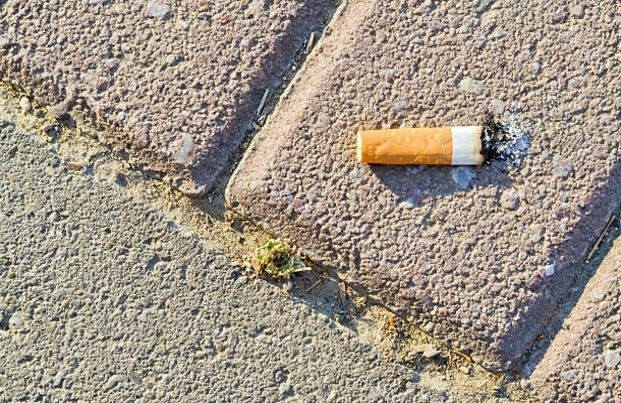How cigarette butts are being turned into environmentally-friendly pavements
Discarded cigs could hold the key to keeping cities cool and clean.

The discarded cigarette butt lying on the floor is a familiar sight and continual environmental pest. But instead of littering the pavement after a smoke, old fags could be used in creating new paving that might hold the solution to the waste problem.
With over six trillion cigarettes produced every year, a significant number of these end up tossed onto the floor. The used cigarettes have been a problem to dispose of for councils for decades – not just for the sheer number reappearing each day, but because they do not easily biodegrade. The filters, designed to trap harmful toxins and tar, take a long time to break down, and their toxic content is washed into rivers and oceans.
A research team at the RMIT University in Melbourne, Australia, has come up with the bright idea that instead of trying to rid remove butts, mixing them with asphalt instead can create a surface that withstands heavy traffic and reduces thermal conductivity.
"I have been trying for many years to find sustainable and practical methods for solving the problem of cigarette butt pollution," said Dr Abbas Mohajerani, who is leading the research.
"In this research, we encapsulated the cigarette butts with bitumen and paraffin wax to lock in the chemicals and prevent any leaching from the asphalt concrete. The encapsulated cigarettes butts were mixed with hot asphalt mix for making samples," he said.
The waste solution could hold the key to reducing the urban heat island effect common in cities, whereby built-up areas are warmer than surrounding areas due to the high number of building and activity of inhabitants. According to the Environmental Protection Agency the annual mean air temperature of a city with 1 million people or more can be 1–3°C warmer than its surroundings, which can lead to a drain on energy demand for air conditioning and in-turn result in air pollution and greenhouse gas emissions.
The treated cigarettes solution is the result of a five-year research project and could help to form a new construction material that could be used in not only paving but also in building aggregates and lightweight composite products.
With an estimate 1.2 million tonnes of cigarette butt waste each year, and a forecast that this figure could rise by 50% by 2025, this solution could be a step in the right direction.
© Copyright IBTimes 2025. All rights reserved.






















